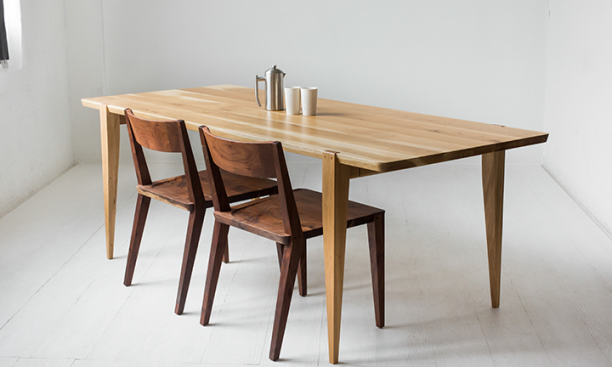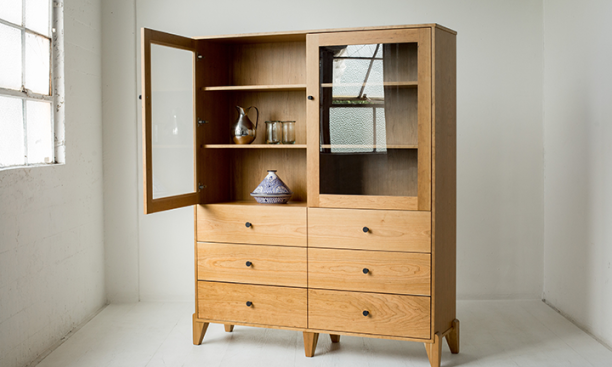
Today, Moe runs a furniture design business with his wife Amanda in Portland, Oregon. She’s the creative/business director for Studio Moe and has driven the business side while Moe crafts the furniture. They specialize in modern, Scandinavian-style dining room tables made from Oregon walnut.
Moe was first exposed to studio art at Princeton, taking courses in sculpture, drawing, and photography. He says photography instructor Emmet Gowin lit a fire in him to pursue his passion: “That was the spark of knowing I wanted to be an artist of some sort.” Inspired by literature courses and short stories he read, he dreamed also of becoming a writer and majored in English.
After his senior year — when Moe scored the winning goal in the first minute of the second overtime of the NCAA men’s lacrosse championship game — he began a journey to find his calling that would span many years and parts of the country. First, he moved to Ophir, a remote mining town in Southwest Colorado, and lived in a 9-by-10-foot hut, while writing a novel. The following year, he worked as a journalist at the Montgomery Advertiser in Alabama. Next was Boston, and an apprenticeship with a furniture maker.

Moe later spent two years studying sculpture at the Massachusetts College of Art around the same time that he fell in love with Argentine tango dancing. For the next 10 years he taught tango classes in Colorado, New Mexico and eventually New York City. After a year in New York, Moe left, “went on a vision quest of sorts and dropped off the radar.” When he re-emerged, he built a dining table while visiting his parents in Colorado. They loved it. “I thought to myself, ‘I wonder if there’s something here,’” he says.
Moe’s craftsmanship has drawn praise from the likes of The New York Times and Architectural Digest, and the materials he uses give his furniture an unusual richness of color. “The walnut that grows in the Pacific Northwest has more color in it than walnut that grows anywhere else in the world,” says Moe. “Because of the climate and soil, it has these deep reds, maroons, burgundies, and purples in it. People love it.”
Moe builds with “urban salvaged” lumber from wild trees that died or were harvested independently from the purpose of using them as lumber. For instance, he’s used trees taken down by the city because they’re in danger of falling on public roads. This method of harvesting is eco-friendly and can add character to woodworking projects because of the diversity of the wood.
Moe seeks elegance and minimalism in his designs. Each piece has no more than a few elements, pared down to their most basic forms. “I’m drawn to simplicity and efficiency, as in nature,” he says. “I’ve always been intrigued by doing as much as I can with as little as possible and letting the materials speak. In nature, there’s nothing superfluous. I like to leave things unsaid sometimes. Letting the viewer fill in the blanks appeals to me.”
In 2009, Moe debuted his Oslo collection, which remains his best seller. He designed the legs of the Oslo to be notched directly into the tabletop, eliminating the need for an “apron,” the piece of wood used underneath conventional tables for beam support. Whereas most tables have strict 90-degree edges, the Oslo eases softly into subtle 15-degree edges and curved corners. “The longer you look at it, the more you realize there’s less there but also more there,” says Moe. “It’s quiet, but hopefully pleasing.”
In many ways, Moe’s work and his studio are the epitome of a family business. “There’s something very satisfying about building a dining table for a family and having that be the thing that they will gather around every night for years and years and years and hopefully pass on to their kids for generations,” he says. “That idea is very close to our heart.”

